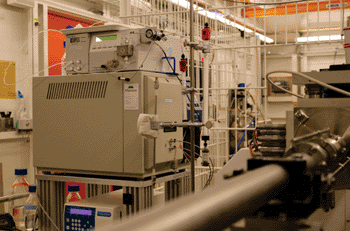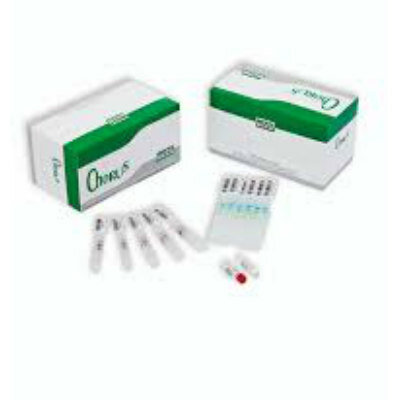Enhanced Characterization Technology Provides Better Understanding of Shape, Structure of Proteins
By LabMedica International staff writers
Posted on 20 Feb 2013
A triple detector array system used before protein analysis provides complementary biophysical data and simultaneously purifies samples for measurement, resulting in more data and better quality information from each experiment.Posted on 20 Feb 2013
Researchers from the European Molecular Biology Laboratory (EMBL; Hamburg, Germany), have integrated a multidetector array size exclusion chromatography (SEC) system from Malvern Instruments (Viscotek TDA triple detector array; Malvern, Worchester, UK) at the laboratory’s strong, small angle X-ray scattering (SAXS) beamline to improve the productivity and quality of detailed protein characterization work.

Image: The Viscotek TDA at Hamburg EMBL is used to enhance protein characterization by small angle X-ray scattering (SAXS) (Photo courtesy of Malvern Instruments).
This novel set-up is not only limited to the institute itself, but is widely accessible to structural biology researchers via BioStructX, a European Commission initiative that creates a single gateway to Europe’s leading synchrotron facilities.
SEC generates a fractionated sample for measurement, separated on the basis of hydrodynamic size. The Viscotek TDA integrates refractive index, ultraviolet (UV), and light scattering detectors, which in combination provide concentration and absolute molecular weight measurement for these eluting fractions. Incorporating this system with the SAXS beamline provides purified samples for measurement that provide optimal signal-to-noise ratios and high quality data. In combination with the biophysical information from the TDA, these data provide detailed evidence about the internal shape and structure of proteins that furthers understanding of their behavior. Specifically, SAXS information is helpful for the determination and tracking of the low-resolution structures and conformational alterations that proteins exhibit.
Both EMBL Hamburg and Malvern Instruments are partners in the BioStructX project, which brings together facilities from across Europe to establish a cutting-edge coordinated and multisite infrastructure to support access for key methods in structural biology. The new integrated SEC-SAXS set-up was developed by a number of specialists within EMBL, and with input from Malvern Instruments to enhance the department’s systems to BioSAXS users transnationally. The automated multipronged characterization has already demonstrated its advantages to the first users and it is expected to be in demand as the BioSructX project advances.
Malvern provides materials and biophysical characterization technology and expertise that enable scientists and engineers to determine and control the properties of dispersed systems. These systems range from proteins and polymers in solution, particle and nanoparticle suspensions, and emulsions, through to sprays and aerosols, industrial bulk powders and high concentration slurries.
Related Links:
European Molecular Biology Laboratory
Malvern Instruments














